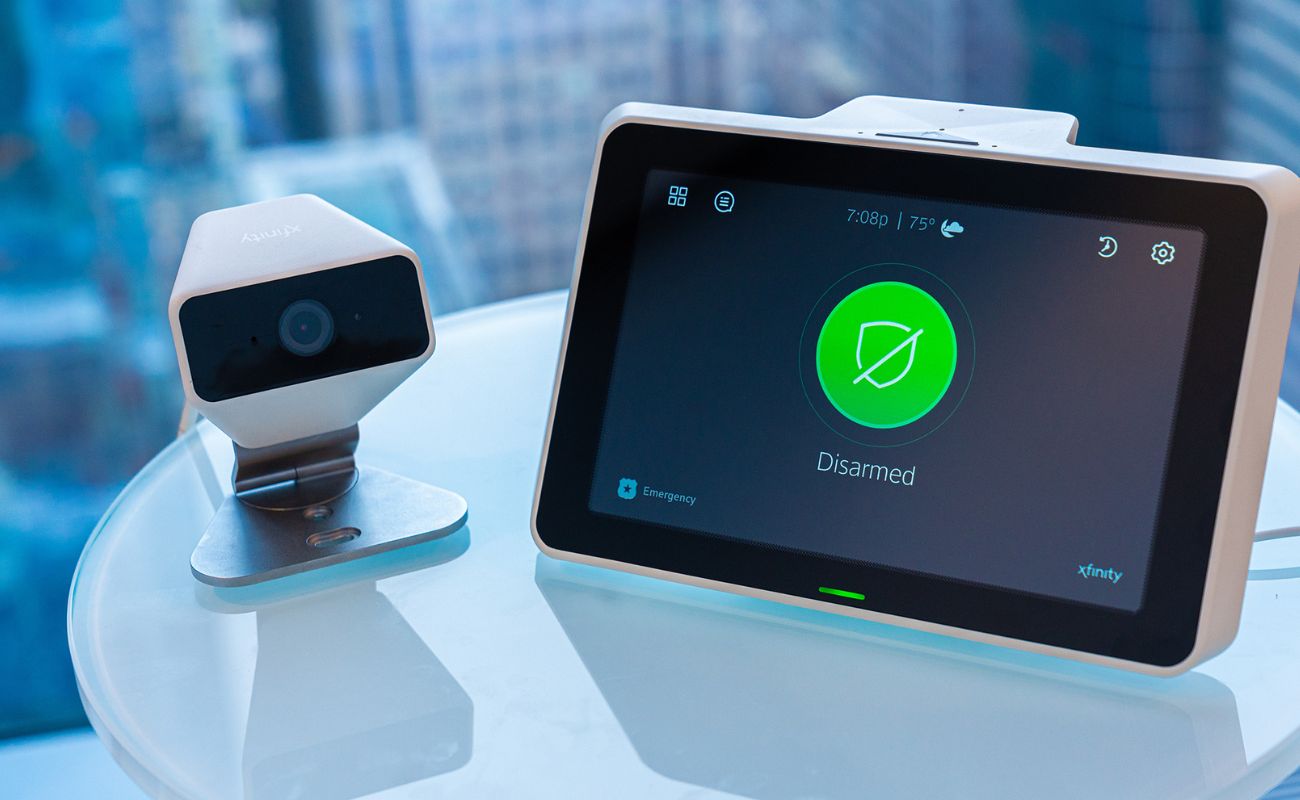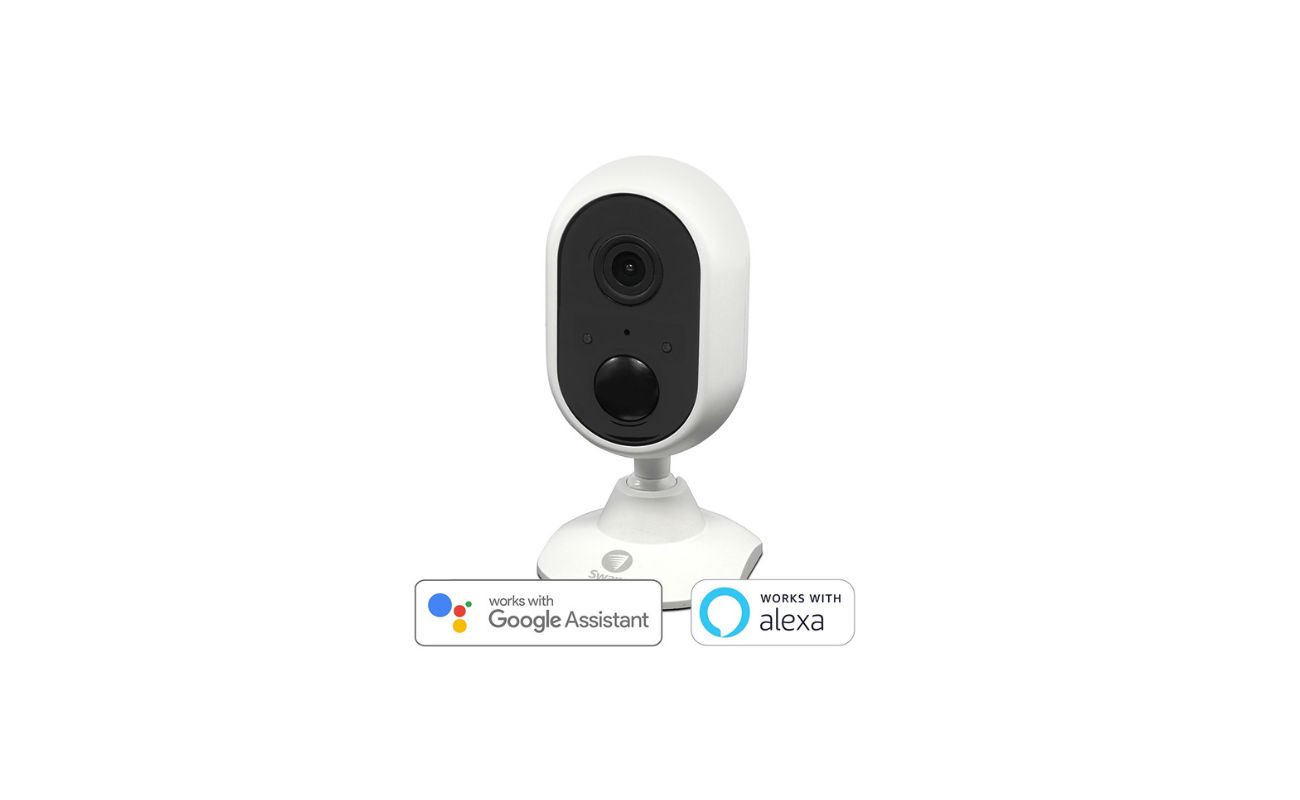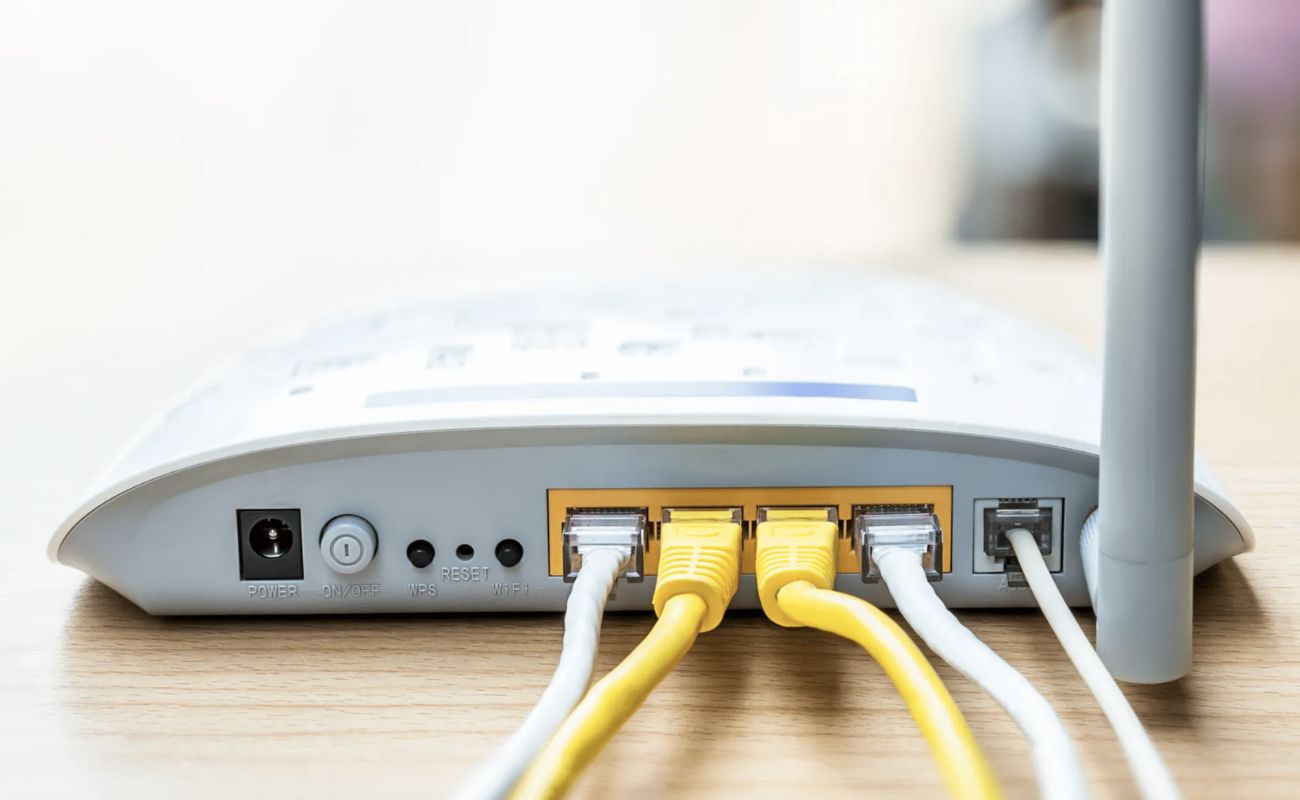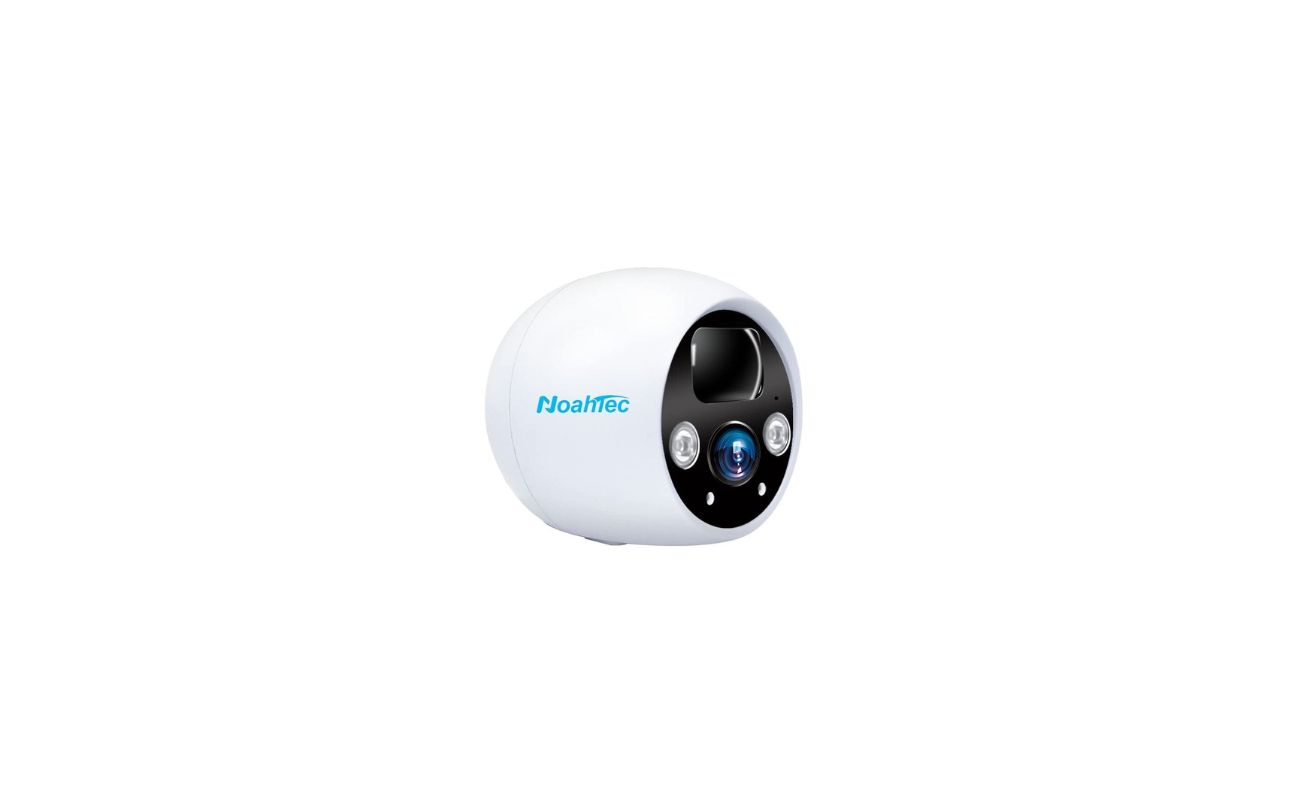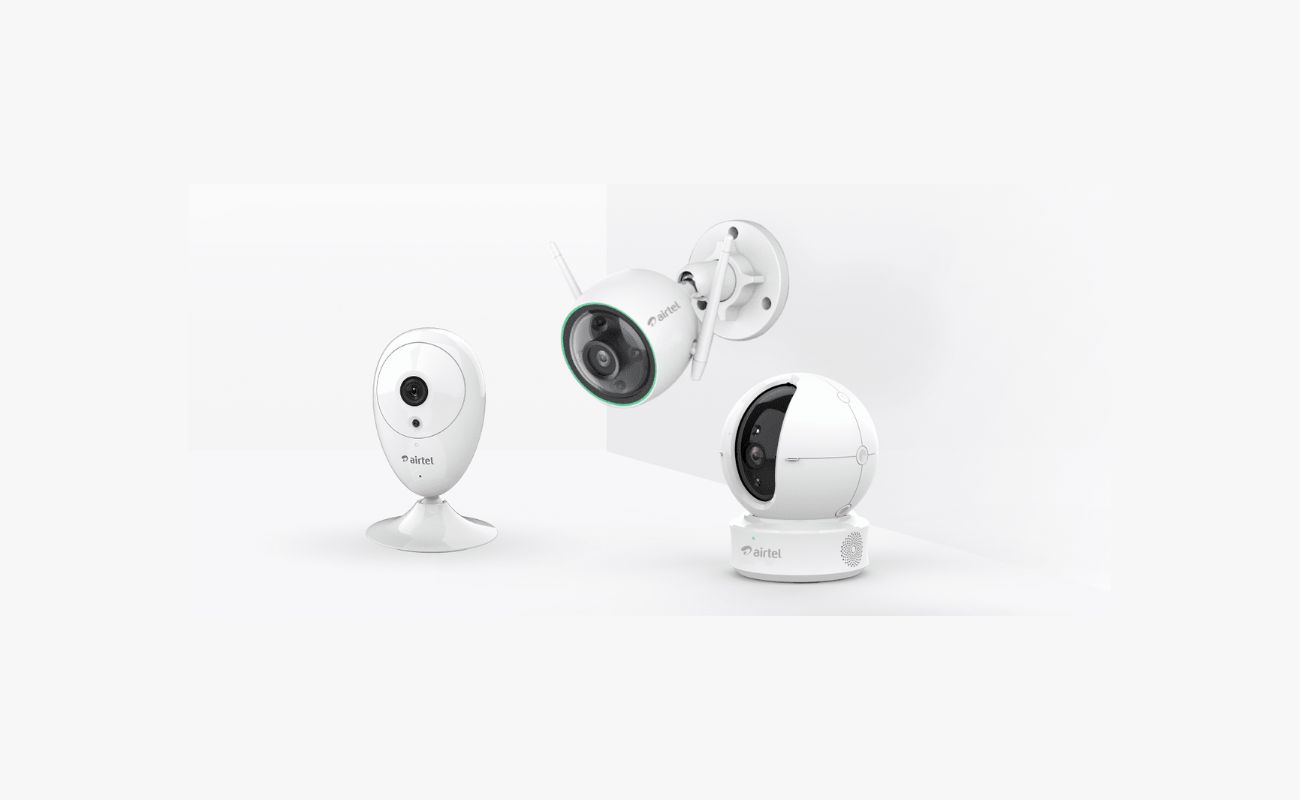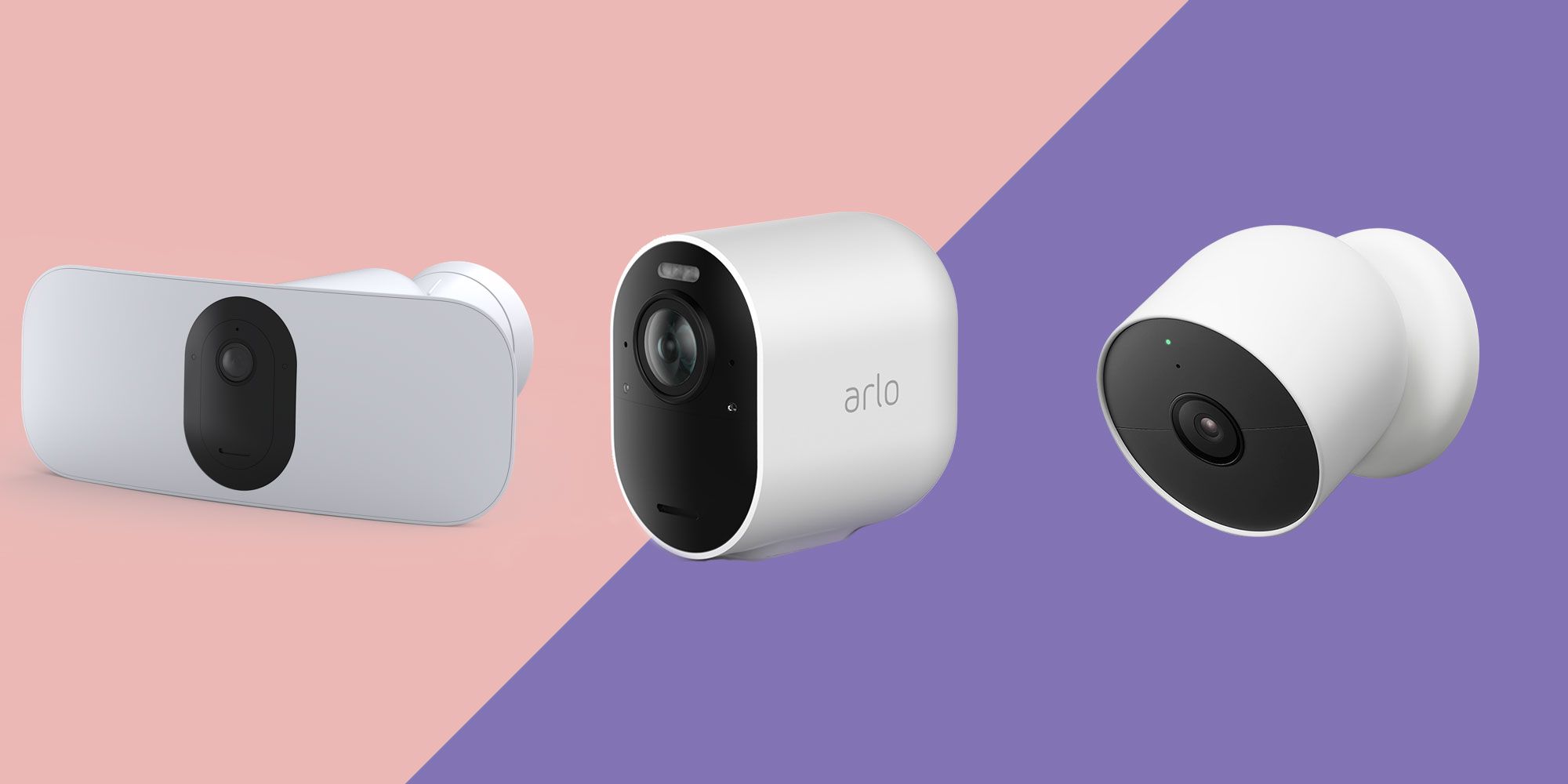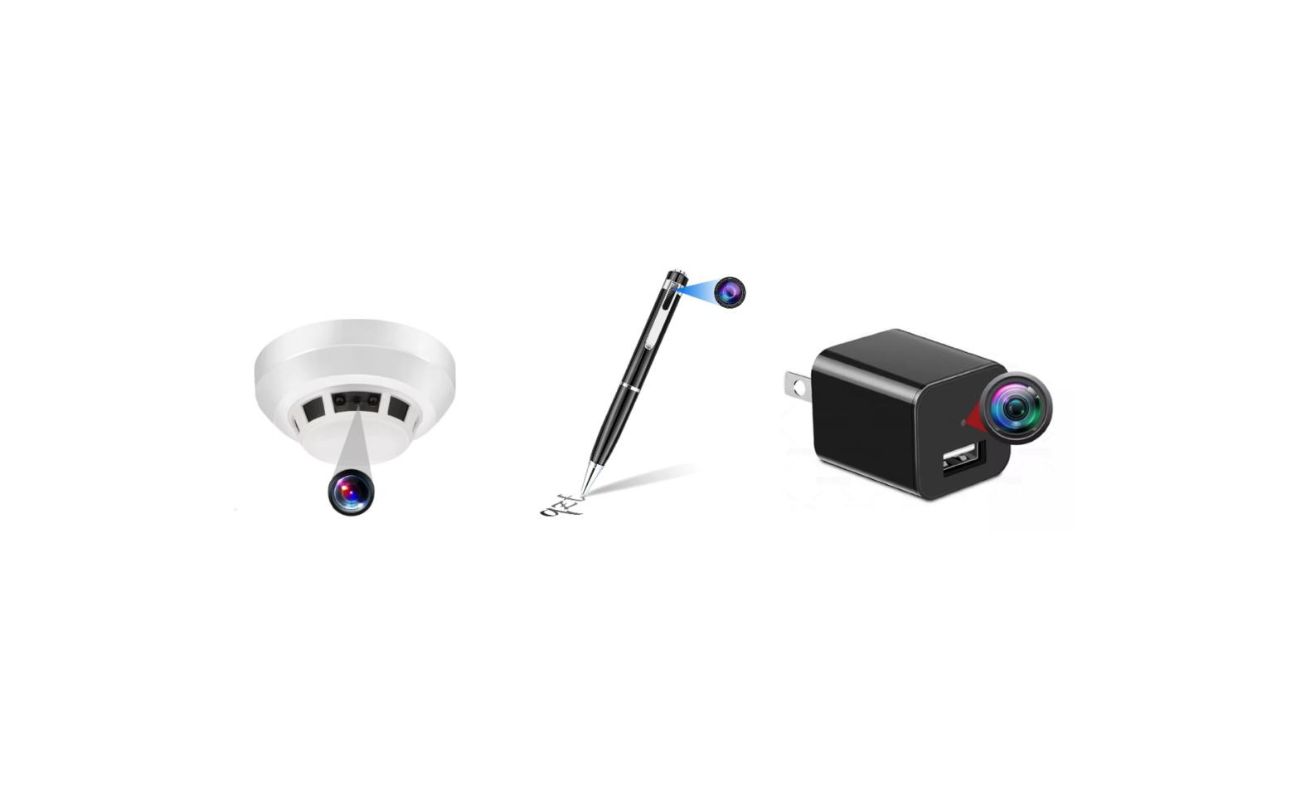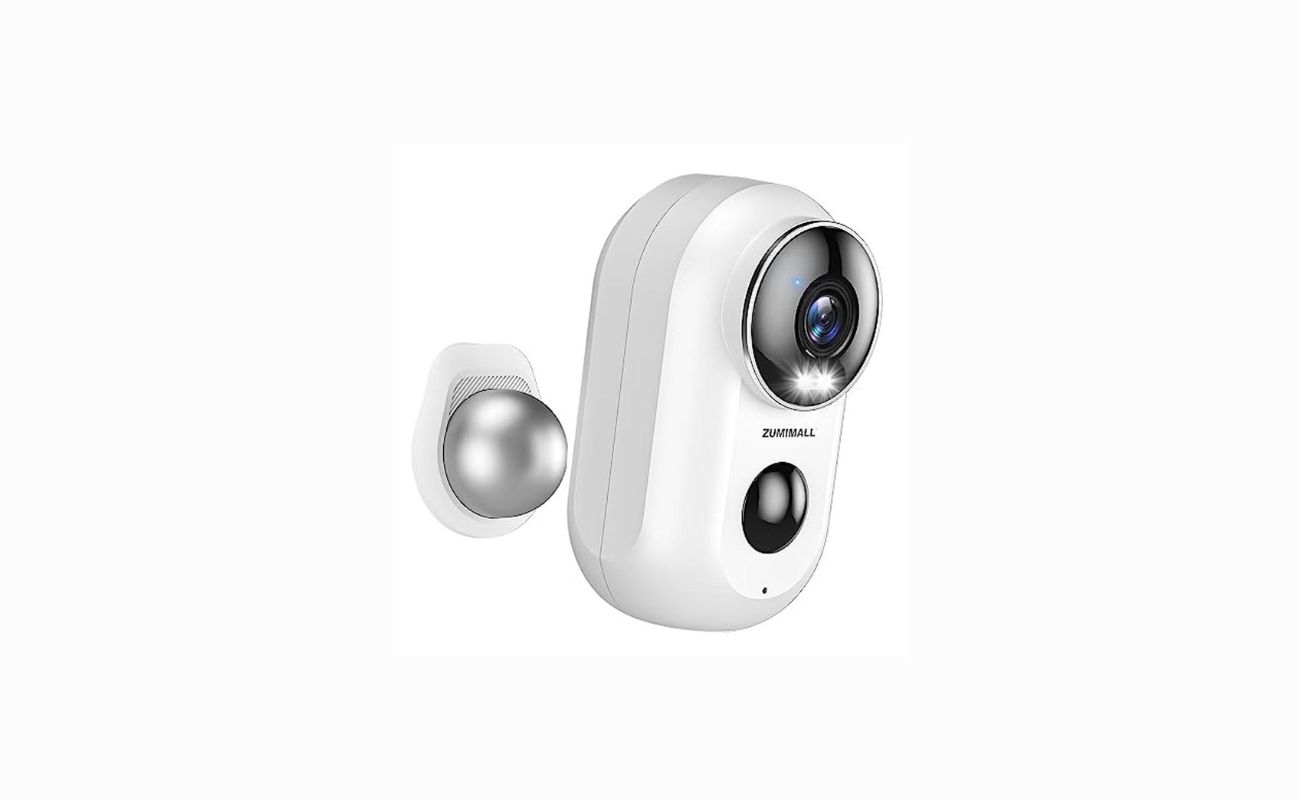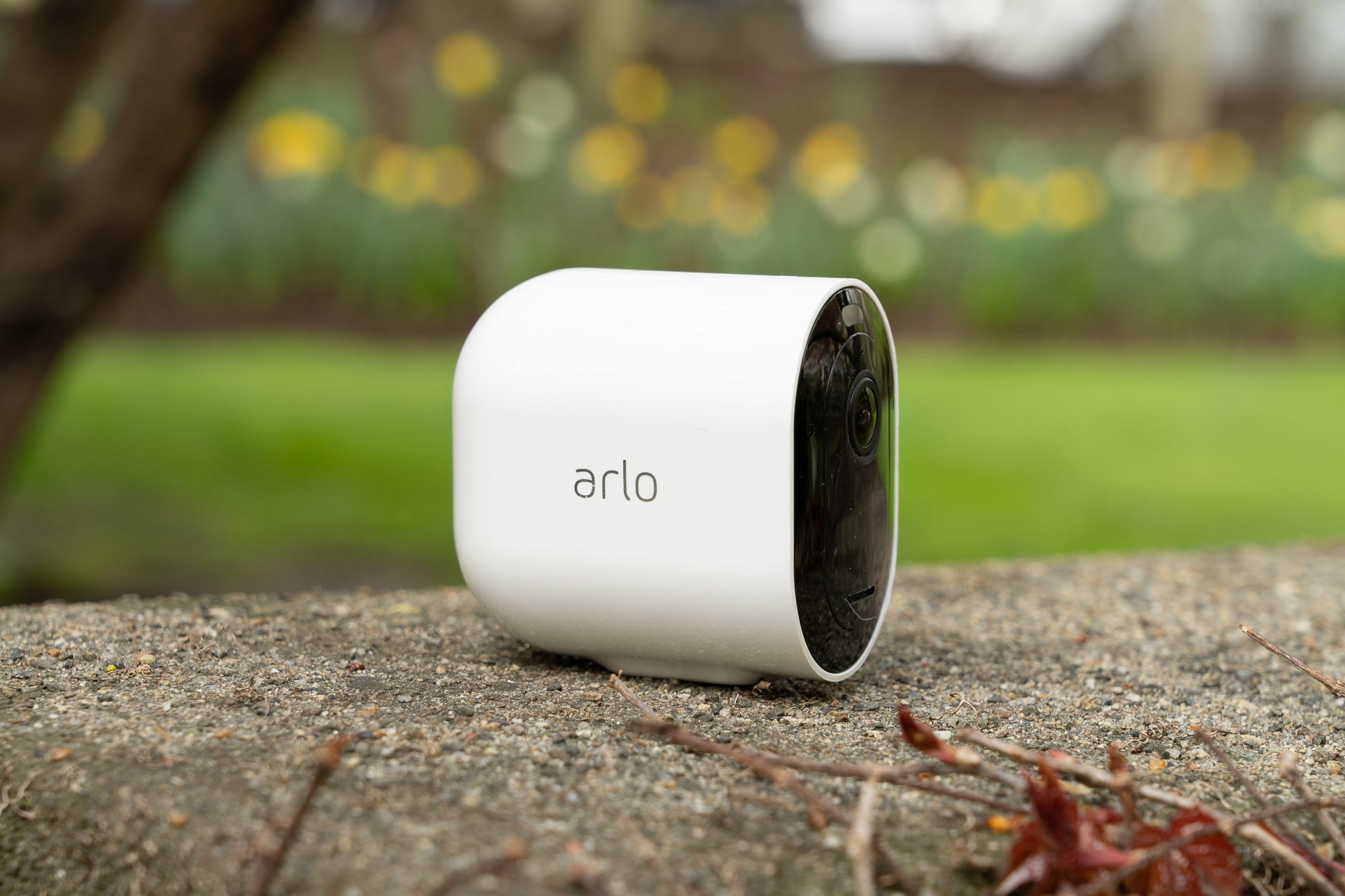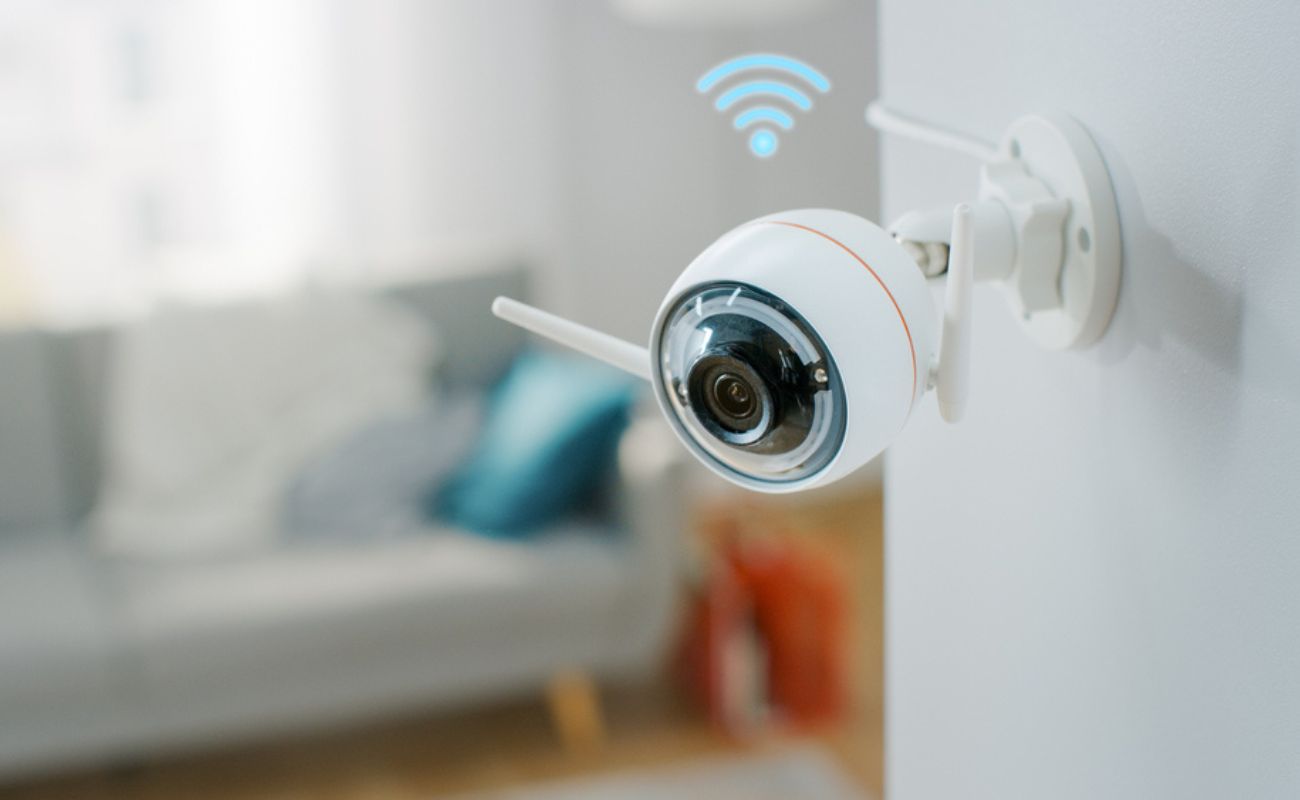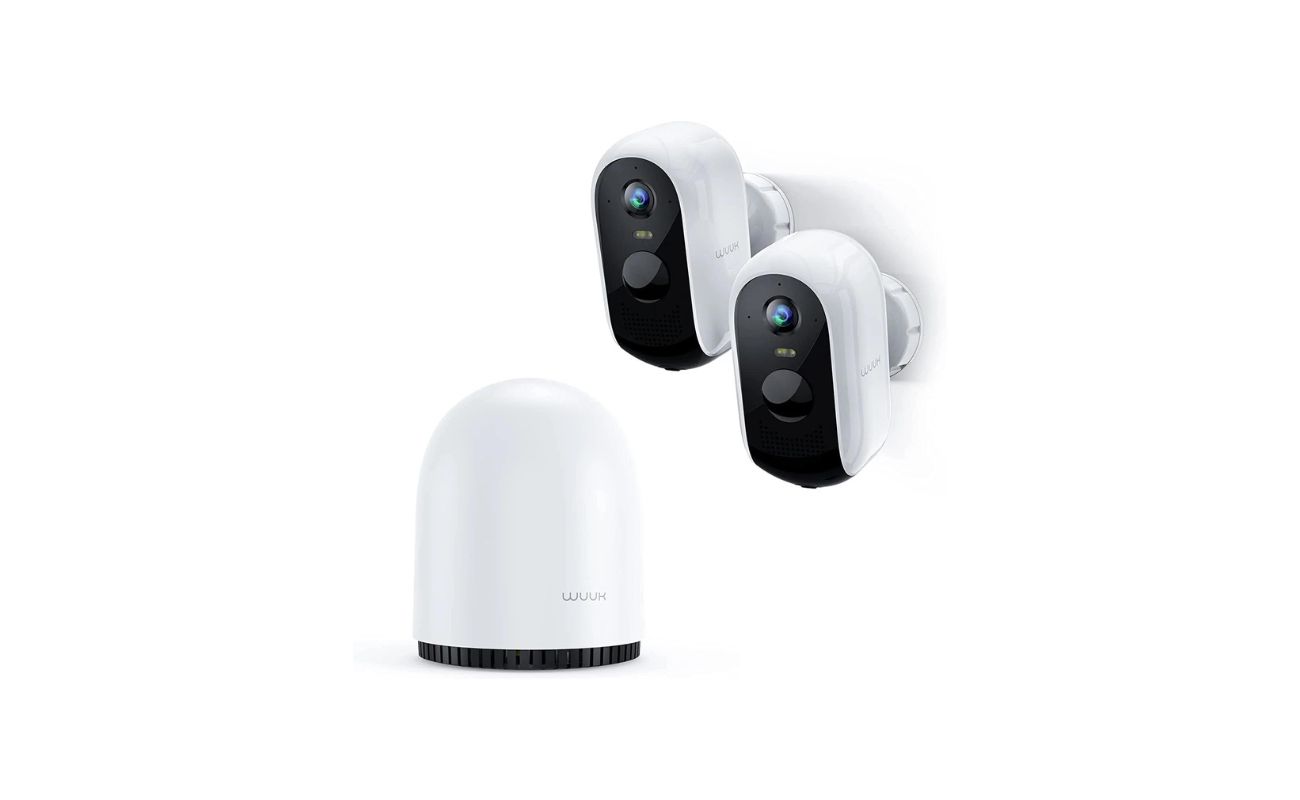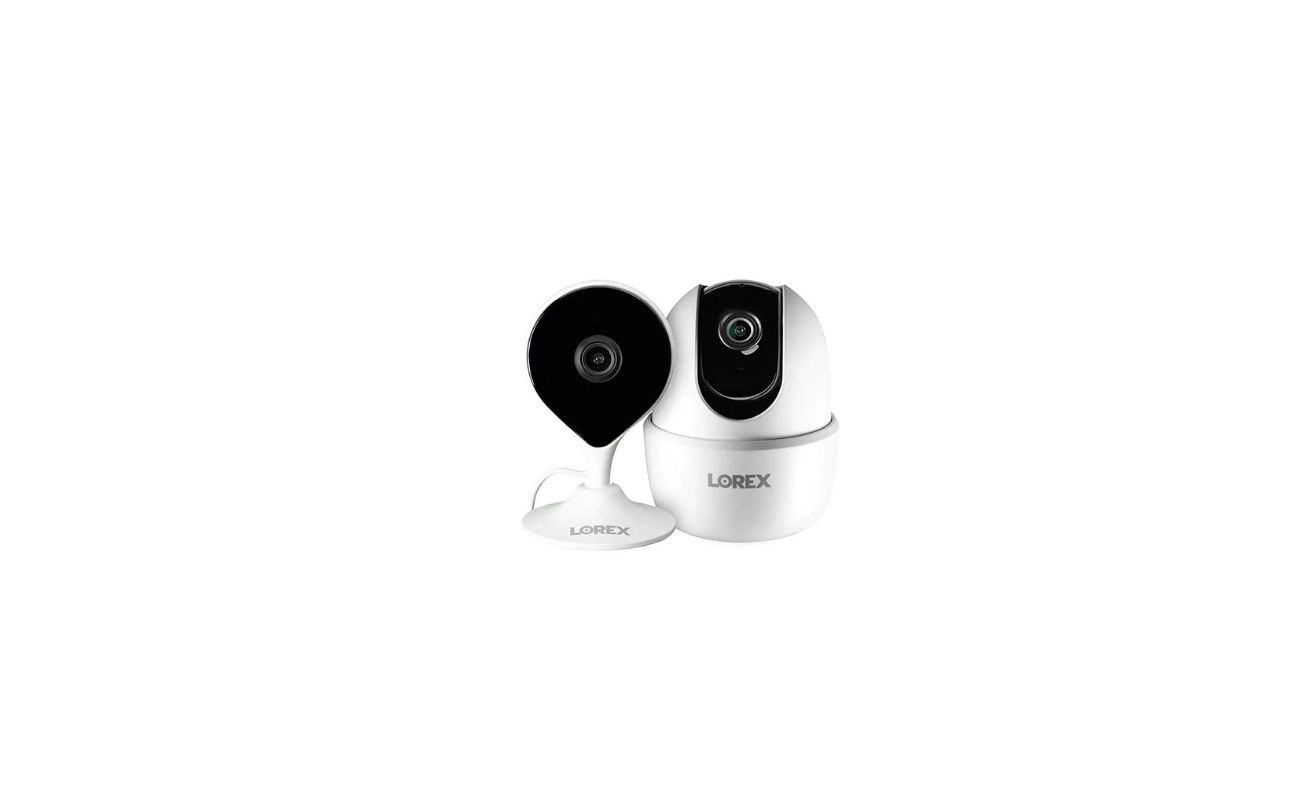Home>Home Security and Surveillance>How Wireless Security Cameras Work
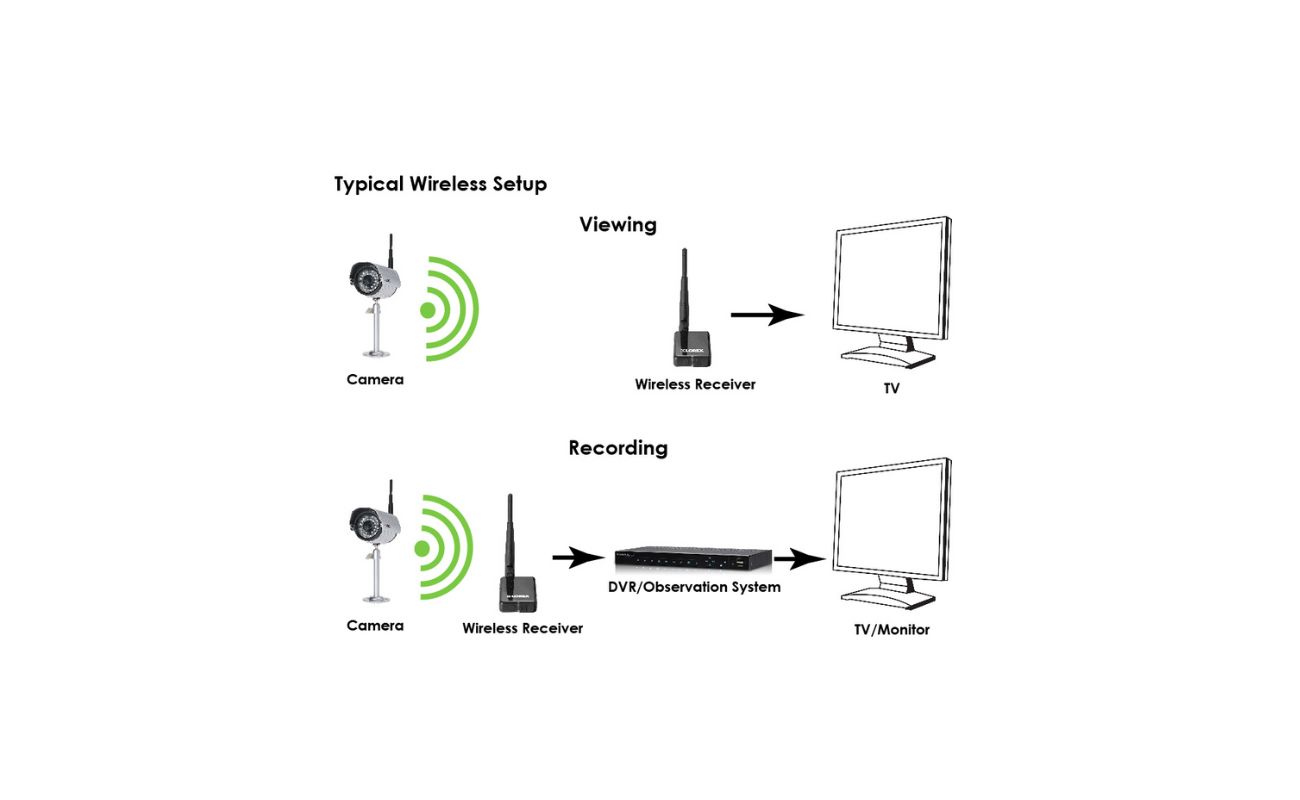

Home Security and Surveillance
How Wireless Security Cameras Work
Modified: March 6, 2024
Learn how wireless security cameras work for home security and surveillance purposes. Explore the technology behind these cameras for effective monitoring and protection of your property.
(Many of the links in this article redirect to a specific reviewed product. Your purchase of these products through affiliate links helps to generate commission for Storables.com, at no extra cost. Learn more)
Introduction
Welcome to our comprehensive guide on how wireless security cameras work. In today’s digital age, ensuring the safety and security of our homes has become a top priority. With advancements in technology, wireless security cameras have emerged as a popular and convenient solution for homeowners to monitor their properties.
Unlike traditional wired surveillance systems that require extensive installations and cabling, wireless security cameras offer flexibility, ease of installation, and the ability to transmit data wirelessly. These cameras utilize the power of wireless communication and advanced video recording technology to capture and store footage, providing homeowners with peace of mind.
Throughout this article, we will delve into the various types of wireless security cameras, explore the components that make up a wireless security camera system, and discuss the factors to consider when choosing the right camera for your specific needs. Additionally, we will highlight the advantages and disadvantages of wireless security cameras to help you make an informed decision.
Are you ready to learn how wireless security cameras work and how they can enhance the safety and security of your home? Let’s dive in.
Key Takeaways:
- Wireless security cameras offer easy installation, remote access, and discreet monitoring. They come in various types, each with unique features to suit specific surveillance needs.
- When choosing a wireless security camera, consider factors such as video quality, night vision, motion detection, and power source. Evaluate your requirements and budget to make an informed decision.
Read more: How Do Wireless Security Cameras Work
Types of Wireless Security Cameras
When it comes to wireless security cameras, there are several different types available on the market. Each type offers unique features and functions to cater to specific surveillance needs. Let’s take a closer look at some of the most common types:
- Indoor Wireless Cameras: As the name suggests, indoor wireless cameras are designed to be used indoors, providing surveillance for the interior of your home. These cameras are typically compact and discreet, allowing you to monitor specific areas such as entryways, hallways, or living rooms. Some indoor wireless cameras also offer additional features like two-way audio communication, enabling you to communicate with whoever is on the other end of the camera.
- Outdoor Wireless Cameras: Outdoor wireless cameras are built to withstand harsh weather conditions and are ideal for monitoring the exterior areas of your property. These cameras often come with weatherproof or waterproof ratings and are equipped with infrared night vision technology to capture clear footage even in low-light or complete darkness. Additionally, outdoor wireless cameras may have wider viewing angles to cover larger areas of your property.
- Pan-Tilt-Zoom (PTZ) Cameras: PTZ cameras provide the flexibility to manually adjust the camera’s viewing angle, allowing you to pan, tilt, and zoom in on specific areas of interest. These cameras are commonly used in larger surveillance systems such as commercial properties or large outdoor areas. PTZ cameras can be controlled remotely, either through a smartphone app or a dedicated controller, giving you the ability to monitor multiple areas with a single camera.
- Wire-Free Cameras: Wire-free cameras, also known as battery-powered cameras, offer the ultimate flexibility in terms of installation. These cameras are not tethered to power outlets or network cables, making them easy to install in any location. They usually rely on rechargeable batteries for power and use wireless communication protocols to transmit data. This makes wire-free cameras a popular choice for temporary surveillance needs or areas where running cables is impractical.
- Hidden Cameras: Hidden cameras, also called covert or spy cameras, are designed to be discreet and blend seamlessly into their surroundings. These cameras may be disguised as everyday objects such as clocks, smoke detectors, or even teddy bears. Hidden cameras are typically used for monitoring specific areas without drawing attention to the presence of a surveillance system. They are often chosen for personal or professional use when you want to discreetly observe activity without alerting others.
These are just a few examples of the types of wireless security cameras available. Each type serves a specific purpose and can be tailored to meet your unique surveillance needs. Before purchasing a wireless security camera, consider the areas you want to monitor, your budget, and any specific features that are important to you. Doing so will ensure you choose the right camera that provides the level of security and peace of mind you desire.
Components of a Wireless Security Camera System
A wireless security camera system consists of several key components that work together to provide effective surveillance of your property. Let’s explore these components in detail:
- Camera: The camera itself is the heart of the wireless security camera system. It captures the video footage and transmits it wirelessly to the receiver or the network. Depending on the type of camera, it may include features such as high-resolution video recording, night vision capabilities, motion detection, and two-way audio.
- Receiver: The receiver acts as the central hub of the wireless security camera system. It receives the video signals from the cameras and converts them into a format that can be viewed and recorded. The receiver may be connected to a monitor or a recording device, such as a digital video recorder (DVR) or a network video recorder (NVR). Some wireless camera systems may also have built-in receivers, eliminating the need for a separate device.
- Network: Wireless security camera systems can be connected to a local area network (LAN) or a wide area network (WAN) for remote access and monitoring. This allows you to view the camera feeds and manage the system from any internet-enabled device, such as a smartphone or a computer.
- Power Source: Most wireless security cameras are powered either by a direct power source or by batteries. Cameras that are connected to a power source through an electrical outlet can operate continuously without the need for frequent battery changes or recharging. On the other hand, battery-powered cameras offer flexibility in terms of placement and can be installed in areas where access to power outlets is limited or impractical.
- Mounting Hardware: To install the wireless security cameras, mounting hardware is required. This includes brackets, screws, and other accessories that allow you to attach the cameras to walls, ceilings, or other surfaces. Some cameras also come with adjustable bases or mounts, giving you the flexibility to position them at different angles and viewpoints.
- Mobile App or Software: Many wireless security camera systems come with dedicated mobile apps or software that allow you to monitor and control the cameras remotely. These apps enable you to view live video footage, receive motion detection alerts, adjust camera settings, and even playback recorded videos. Having easy access to your camera system through a user-friendly app adds convenience and enhances the overall user experience.
By understanding the components of a wireless security camera system, you can make informed decisions when setting up your surveillance system. Whether you opt for a simple single-camera setup or a more advanced system with multiple cameras and additional features, having a thorough understanding of these components will ensure a smooth and effective installation process.
Wireless Communication Protocols
Wireless security cameras rely on various communication protocols to transmit video and other data wirelessly. These protocols determine the range, bandwidth, and security of the wireless connection. Let’s take a look at some common wireless communication protocols used in security camera systems:
- Wi-Fi (Wireless Fidelity): Wi-Fi is a widely used wireless communication protocol that allows devices to connect to a local area network (LAN) wirelessly. Many wireless security cameras are equipped with Wi-Fi capabilities, enabling them to connect to your home network. Wi-Fi cameras can be accessed and controlled through a wireless router, allowing users to view live video feeds or receive push notifications on their smartphones or computers. It is important to ensure that your Wi-Fi network is secure to prevent unauthorized access to your camera feed.
- Bluetooth: Bluetooth is another wireless communication protocol commonly found in security cameras. It is typically used for short-range communication, often within a range of 30-100 feet. Bluetooth-enabled security cameras can be connected directly to other devices, such as smartphones, tablets, or computers, without the need for a network connection. This can be useful for setting up the camera, adjusting settings, or transferring data wirelessly.
- Z-Wave: Z-Wave is a wireless communication protocol designed specifically for home automation devices. It operates on a low-power radio frequency, allowing security cameras and other smart home devices to communicate with each other. Z-Wave-compatible security cameras can be integrated into a larger home automation system, providing seamless control and interaction with other devices, such as motion sensors, door locks, and lighting systems.
- Zigbee: Similar to Z-Wave, Zigbee is a wireless communication protocol commonly used in smart home devices. Zigbee-enabled security cameras can connect to a Zigbee hub or a smart home control system, enabling integration and automation. Zigbee operates on a low-power mesh network, allowing devices to communicate with each other and extend the range of the network by relaying signals.
- Cellular: Cellular communication utilizes the existing cellular network infrastructure to transmit video and data. Cellular security cameras are equipped with SIM cards and have built-in 4G or LTE capabilities. These cameras are an excellent choice for remote locations or areas where there is no reliable Wi-Fi or Ethernet connection. Cellular security cameras can be accessed and controlled through a dedicated app or a web portal, providing real-time video monitoring and remote management.
Each of these wireless communication protocols has its advantages and considerations. When choosing a wireless security camera system, it is essential to ensure compatibility with your existing network setup and any other devices you may want to integrate. Additionally, consider factors such as range, bandwidth, reliability, and security when selecting the appropriate wireless protocol for your surveillance needs.
How Wireless Security Cameras Capture and Store Footage
Wireless security cameras use advanced technology to capture and store video footage, providing homeowners with a reliable and convenient way to monitor their properties. Let’s explore how these cameras capture and store footage:
Video Capture: Wireless security cameras are equipped with high-resolution image sensors that capture video footage. These sensors convert the visual information into digital signals, which are then processed and encoded into video files. The quality of the video capture depends on factors such as the resolution, frame rate, and lens quality of the camera.
Wireless Transmission: Once the footage is captured, wireless security cameras use wireless communication protocols such as Wi-Fi or cellular to transmit the video data. The cameras send the encoded video signals to a receiver, network video recorder (NVR), or cloud storage over a wireless connection. This allows homeowners to access the live video feed or recorded footage remotely through a computer, smartphone, or tablet.
Recording Options: Wireless security cameras offer various recording options to store the captured footage. Some cameras have built-in local storage options, such as a microSD card slot, where video files can be saved directly on the camera itself. This provides a convenient and independent storage solution while allowing homeowners to access the footage without relying on additional devices or cloud services.
NVR (Network Video Recorder): Many wireless security camera systems use an NVR for centralized video recording and management. An NVR is a device that connects to the network and is responsible for receiving, decoding, and storing video footage from multiple cameras. The NVR can be accessed through a web-based interface or a dedicated software application, allowing homeowners to manage the cameras, view live feeds, and playback recorded footage.
Cloud Storage: Cloud storage is an increasingly popular choice for storing video footage from wireless security cameras. Cloud storage services offer secure remote storage for video files. The cameras upload the footage to a cloud server via an internet connection. This not only provides an off-site backup for the footage but also allows homeowners to access and manage the footage from anywhere using a computer or mobile device.
Motion Detection and Alerts: Wireless security cameras are often equipped with motion detection capabilities. This feature allows the camera to detect any movement within its field of view. When motion is detected, the camera can send alerts to the homeowner’s smartphone or email, allowing them to quickly assess the situation and view the live footage. Motion detection can help conserve storage space by only recording when there is activity, rather than continuously capturing video.
By understanding how wireless security cameras capture and store footage, homeowners can choose the appropriate recording options that suit their needs and preferences. Whether it’s utilizing local storage, an NVR, or cloud storage, these cameras provide convenient and reliable solutions for monitoring and securing your property.
When setting up a wireless security camera, make sure to use a strong and unique password for the camera’s network to prevent unauthorized access.
Powering Wireless Security Cameras
Powering wireless security cameras is a crucial aspect to consider when setting up a surveillance system. These cameras require a power source to function properly. Let’s explore the different power options available for wireless security cameras:
- AC Power: Some wireless security cameras are designed to be powered directly through an AC power outlet. These cameras typically come with an adapter or power cord that plugs into the outlet, providing a continuous power supply. AC-powered cameras ensure uninterrupted operation, making them suitable for long-term surveillance needs or locations where power outlets are easily accessible.
- Battery Power: Battery-powered wireless security cameras offer flexibility in terms of installation. These cameras are not reliant on electrical outlets, making them easy to mount in any location, even where access to power is limited or unavailable. Battery-powered cameras often use rechargeable batteries, allowing for extended use without the need to constantly replace batteries. However, it’s essential to keep track of battery life to ensure uninterrupted monitoring.
- Solar Power: Some wireless security cameras are equipped with solar panels to harness renewable energy from the sun. Solar-powered cameras are an eco-friendly option that eliminates the need for external power sources. These cameras use a combination of solar panels and rechargeable batteries to power the device, ensuring continuous operation even in areas with limited access to electrical outlets. Solar-powered cameras are especially useful for outdoor surveillance in remote locations.
- PoE (Power over Ethernet): Power over Ethernet is a method of powering devices using the Ethernet cable that transmits data. PoE-enabled wireless security cameras receive both power and data through a single Ethernet cable. This eliminates the need for separate power cables, simplifying the installation process. PoE cameras can be connected to a PoE switch or injector, which supplies power over the Ethernet cable. This power option is commonly used in larger surveillance systems where multiple PoE devices are connected.
When choosing a power source for your wireless security cameras, consider factors such as the location of the cameras, the availability of power outlets, and the desired level of convenience. AC power provides a reliable and continuous supply, while battery and solar power offer flexibility and autonomy. Additionally, PoE is an efficient solution for power and data transmission in larger surveillance setups.
It’s important to note that each power option has its limitations. AC-powered cameras can be affected by power outages, while battery-powered cameras require regular battery maintenance. Solar-powered cameras rely on sunlight availability, and PoE cameras require a PoE-compatible network infrastructure. By selecting the right power option based on your specific needs, you can ensure that your wireless security cameras operate smoothly and provide continuous surveillance for your home or property.
Installation and Setup of Wireless Security Cameras
Installing and setting up wireless security cameras is a crucial step to ensure optimal performance and functionality. While the specific installation process may vary slightly depending on the camera model and brand, here are some general steps to guide you:
- Selecting the Camera Locations: Determine the areas of your property that require surveillance and choose suitable locations for the cameras. Consider factors such as line of sight, coverage area, and potential obstructions. It’s important to place cameras high enough to avoid tampering and ensure a clear view of the intended area.
- Power Source: Determine the power source for your wireless security cameras. If the cameras are AC-powered, ensure that there are nearby power outlets. For battery-powered or solar-powered cameras, consider the placement based on access to sunlight or the need for battery replacement or recharging.
- Camera Mounting: Mount the cameras securely using the appropriate mounting hardware. Follow the manufacturer’s instructions for proper installation, ensuring that the cameras are level and stable. Adjust the camera angle and position to capture the desired areas effectively.
- Wireless Connection: If your wireless security cameras support Wi-Fi connectivity, connect them to your home network. Follow the camera’s setup instructions to enter your Wi-Fi network credentials and establish a wireless connection. Ensure that the Wi-Fi signal is strong and stable in the camera’s location for reliable transmission of video footage.
- Configuration and Testing: Once the cameras are connected to the network, access the camera’s settings through a mobile app, web interface, or software. Customize the camera settings, such as video resolution, motion detection, and recording preferences, according to your requirements. Conduct a test to ensure that the cameras are capturing and transmitting video footage correctly.
- Recording and Storage: Configure the recording and storage options for your wireless security cameras. If you are using local storage, insert a microSD card or connect an external storage device to the camera. For cloud storage or NVR setup, follow the manufacturer’s instructions to set up remote access and recording capabilities.
- Remote Viewing: If you want to access your camera feeds remotely, download the appropriate mobile app or software provided by the camera manufacturer. Follow the setup instructions to pair the cameras with the app and configure remote viewing settings. This will allow you to monitor your property in real-time and receive notifications of any detected activity.
- Regular Maintenance: To ensure the continued functionality of your wireless security cameras, perform regular maintenance tasks. Check camera angles and positions periodically, clean the lenses to remove any dirt or debris, and inspect the power source for battery-powered cameras. Updating the camera firmware or software regularly is also recommended to keep up with any security patches or performance enhancements.
It is important to refer to the specific instructions provided by the camera manufacturer for accurate installation and setup. Always prioritize safety during the installation process, and consult professional assistance whenever necessary. By following these steps and setting up your wireless security cameras correctly, you can enjoy reliable surveillance and peace of mind for your home or property.
Advantages and Disadvantages of Wireless Security Cameras
Wireless security cameras offer several advantages and disadvantages compared to their wired counterparts. Understanding these pros and cons can help you make an informed decision when choosing a surveillance system for your home or property. Let’s explore the advantages and disadvantages of wireless security cameras:
Advantages:
- Easy Installation: Wireless security cameras are easier to install than wired cameras since they do not require extensive wiring or cabling. This makes them a convenient option for those who don’t have technical expertise or prefer a hassle-free installation process.
- Flexibility and Mobility: Wireless security cameras provide the flexibility to place them in various locations without being limited by the availability of power outlets or network connections. This allows you to monitor different areas of your property and adjust camera placements as needed.
- Remote Access: With wireless security cameras, you can access live video feeds and recorded footage remotely through a smartphone, tablet, or computer. This enables you to keep an eye on your property from anywhere and at any time, providing peace of mind even when you’re away.
- Expandability: Wireless security camera systems can be easily expanded by adding more cameras to the network. This scalability allows you to customize your surveillance system based on your evolving needs or as your property expands.
- Discreet Monitoring: Wireless security cameras come in various sizes and designs, including hidden cameras that can be disguised as everyday objects. This enables discreet monitoring without drawing attention to the presence of surveillance cameras.
Disadvantages:
- Reliability of Wireless Connection: The reliability of wireless connections can be affected by factors such as signal interference, distance from the router, and obstacles between the camera and the receiver or network. Weak signals or occasional signal drops may result in interrupted or poor-quality video transmission.
- Battery Life: Battery-powered wireless security cameras rely on batteries for power, and their battery life can vary depending on usage and camera settings. Regular battery maintenance and monitoring are necessary to ensure uninterrupted surveillance.
- Limited Range: Wireless security cameras have a limited range, and the maximum distance between the cameras and the receiver or network may vary depending on the specific camera model. It’s important to consider the range of the cameras and ensure that they are within range of the network or receiver for seamless operation.
- Higher Cost: Wireless security cameras can be more expensive than their wired counterparts due to the inclusion of wireless technology and additional features. However, the cost difference may be offset by savings on installation and wiring expenses.
- Bandwidth Limitations: Transmitting video wirelessly requires bandwidth, and multiple wireless security cameras in a network can consume a significant amount of bandwidth. This may impact the performance of other devices on the network if the available bandwidth is limited.
Considering these advantages and disadvantages will help you determine whether wireless security cameras are the right choice for your surveillance needs. It’s important to evaluate your specific requirements and take into account factors such as the layout of your property, desired features, budget, and the level of technical expertise available for installation and maintenance.
Factors to Consider When Choosing a Wireless Security Camera
Choosing the right wireless security camera for your needs requires careful consideration of several factors. With a wide range of options available on the market, it’s essential to identify the features and specifications that align with your surveillance requirements. Here are some key factors to consider when selecting a wireless security camera:
- Video Quality: The video quality of the camera is crucial for capturing clear and detailed footage. Look for cameras with high-resolution capabilities, such as 1080p or higher, to ensure sharp and accurate images.
- Night Vision: If you require surveillance during nighttime or low-light conditions, consider cameras with high-quality infrared (IR) night vision capabilities. Look for cameras that can capture clear images in the dark, allowing you to monitor your property around the clock.
- Field of View: The field of view (FOV) determines the coverage area of the camera. Cameras with wide-angle lenses offer a broader FOV, allowing you to monitor larger areas with a single camera. Consider the specific areas you want to cover and choose a camera with an appropriate FOV to ensure comprehensive surveillance.
- Motion Detection: Motion detection technology enables cameras to detect movement and trigger notifications or recording. Look for cameras with customizable motion detection settings, allowing you to set specific areas or zones for detection. This helps reduce false alerts and ensures that you are notified only when relevant activity occurs.
- Two-Way Audio: Two-way audio functionality allows you to communicate through the camera. This can be useful for remotely interacting with family members, visitors, or even pets. Consider cameras with built-in microphones and speakers if two-way audio is an important feature for your surveillance needs.
- Storage Options: Determine how you want to store the recorded footage. Some wireless security cameras offer local storage options, such as microSD cards, while others provide cloud storage or can be integrated with a network video recorder (NVR). Choose the option that aligns with your preferences and requirements for accessing and managing the recorded footage.
- Power Source: Consider whether AC power, battery power, solar power, or Power over Ethernet (PoE) best suits your installation location and power availability. AC power provides continuous operation, while battery and solar power offer flexibility. PoE eliminates the need for separate power cables in PoE-enabled network setups.
- Remote Viewing: If remote monitoring is important to you, ensure that the camera is compatible with a dedicated mobile app or software that allows you to access the live video feed and manage the camera remotely. Check for features such as live streaming, playback, and the ability to receive motion detection alerts on your smartphone or other devices.
- Integration with Smart Home Systems: If you have a smart home ecosystem, consider cameras that are compatible with popular smart home platforms such as Amazon Alexa, Google Assistant, or Apple HomeKit. This allows you to integrate the camera with your existing smart home devices and control them through a unified platform.
- Price and Budget: Set a budget for your wireless security camera system and consider the cost of the camera, additional accessories, and any ongoing subscription fees for cloud storage or advanced features. Balance your budget with the desired features to find a camera that meets both your needs and financial constraints.
By carefully evaluating these factors and prioritizing your specific requirements, you can select a wireless security camera that suits your surveillance needs and provides the level of peace of mind you desire. Take the time to research different camera models, read customer reviews, and seek professional advice if needed to make an informed decision.
Conclusion
Wireless security cameras have revolutionized the way we monitor and safeguard our homes and properties. With their ease of installation, flexibility, and remote access capabilities, they have become increasingly popular in the realm of home security. Throughout this guide, we have explored the various types of wireless security cameras, the components that make up a wireless security camera system, and the factors to consider when choosing the right camera for your specific needs.
From indoor and outdoor cameras to pan-tilt-zoom and wire-free options, there are cameras to suit every situation. We have also discussed the importance of reliable wireless communication protocols and the methods by which these cameras capture, transmit, and store footage effectively. Understanding the advantages and disadvantages of wireless security cameras is crucial in making an informed decision that meets your requirements.
Factors such as video quality, night vision capabilities, field of view, motion detection, storage options, and power sources should be carefully evaluated when selecting a wireless security camera. It is also important to consider remote viewing capabilities, integration with other smart home devices, and your budget limitations.
Wireless security cameras provide us with the peace of mind that comes with knowing our homes are being monitored and protected. Whether you are looking to enhance the security of your family or keep an eye on your property while you are away, wireless security cameras offer a convenient and effective solution.
As technology continues to advance, the features and capabilities of wireless security cameras will only improve. It is essential to stay informed and keep up with the latest developments to ensure your home security system remains up to date and effective.
By taking the time to evaluate your specific needs and considering the factors mentioned in this guide, you can confidently choose the right wireless security camera system to protect your home and provide peace of mind. Remember to prioritize security, convenience, and reliability when making your decision. With the right wireless security camera system in place, you can create a safe and secure environment for you and your loved ones.
Frequently Asked Questions about How Wireless Security Cameras Work
Was this page helpful?
At Storables.com, we guarantee accurate and reliable information. Our content, validated by Expert Board Contributors, is crafted following stringent Editorial Policies. We're committed to providing you with well-researched, expert-backed insights for all your informational needs.
